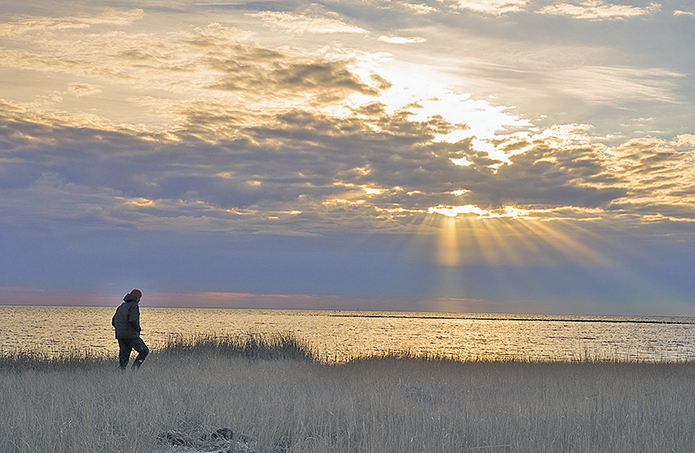By Timothy B. Wheeler
Bay Journal
Federal funding for Chesapeake Bay restoration efforts is in line for a boost in the big spending package passed this week by Congress.
Increased Bay-related funding is included in a pair of appropriations bills totaling nearly $1.4 trillion that were agreed upon by delegations from the House and Senate to fund most federal agencies through Sept. 30, 2020, the end of this budget year. The House overwhelmingly passed the bills Tuesday, and the Senate approved them on Thursday.
President Trump is expected to sign them promptly into law to avoid a partial government shutdown.
The U.S. Environmental Protection Agency’s Chesapeake Bay Program, which guides the overall restoration work throughout the six-state watershed, will get $85 million, the most it’s ever received.
That’s a 16% increase over what the program received annually from Congress for the last five years. It’s also almost $78 million more than the Trump White House had asked for this year. That request would have resulted in a nearly 90% cut to the Bay Program budget.
“We fought hard for this investment, and I’m pleased that this effort succeeded, despite the Administration’s continued attempts to slash this funding,” said Sen. Chris Van Hollen, D-Md.
Kristin Reilly, director of the Choose Clean Water Coalition, which represents more than 240 groups in the Chesapeake watershed, called the increased Bay Program funding “a great victory for clean water.”
“As the 2025 deadline approaches to have all programs and practices in place to restore water quality,” she said, “continued investment by the federal government in the Bay Program will pay huge dividends not only for the environmental benefits, but also to communities and local economies throughout the watershed.”
How it is to be spent
A joint House-Senate report accompanying the spending package specifies how much of EPA’s enlarged Bay Program budget is to be spent.
It directs the agency to distribute two $9 million grant programs to states, local governments and nonprofit groups — one for restoration efforts in small Bay tributary watersheds and the other for “innovative” nutrient and sediment reduction projects.
The report also stipulates that watershed states should get another $6 million for targeted pollution prevention or cleanup in places where science indicates it will do the most good.
Congress approved increased spending on the Bay in other agency budgets as well.
The U.S. Army Corps of Engineers saw its budget grow, and at least some of that money could go to projects in the Bay. The Corps got $100 million, double the level in fiscal year 2019, for environmental restoration and protection, including $25 million for programs with a comprehensive restoration plan.
Congress also set aside $5 million in the Corps budget for oyster restoration, with reef reconstruction in the Bay specifically recommended in the conference report. Reef restoration in Maryland’s Tred Avon River has been largely on hold after federal funding ran out.
Finally, Corps funding more than doubled, from $8.1 million in fiscal year 2019 to $17.3 million this year, for expanding Poplar Island near Tilghman Island. The Corps is working with the Maryland Port Administration to rebuild the disappearing island using material dredged from Bay shipping lanes leading to Baltimore harbor.
The U.S. Geological Survey also received a $2 million boost, bringing to $14.85 million the funding it’s to have for ecosystem science and monitoring work in the Bay watershed.
Finally, the National Park Service got a 50% increase for its Chesapeake Bay Gateways and Watertrails Network, a collection of more than 170 sites around the region where the public can connect with the natural and cultural heritage of the Bay. Joel Dunn, President and CEO of the nonprofit Chesapeake Conservancy, said the $3 million appropriation marks the first time the program has received the full amount authorized by Congress.\
Great news
Ann Swanson, executive director of the Chesapeake Bay Commission, called all the spending increases “pretty great news.”
“It really reflects the national significance of our world-class restoration work,” Swanson said. “This new infusion of money will let us lead by example.”
Funding likewise increased for several nationwide federal programs that do some work in the Bay watershed. Among them:
• The operations budget of the U.S. Department of Agriculture’s Natural Resources Conservation Service, which assists farmers and ranchers in reducing their environmental impacts, increased by more than $10 million, to $829 million.
•The National Oceanic and Atmospheric Administration’s Sea Grant College Program saw a $7 million increase from last year, to $87 million for this budget year. The university-based national network supports scientists and other experts working to improve the conservation, management and use of coastal resources.
Also, in a move that could presage even more federal dollars going to Chesapeake restoration in the future, the Senate Environment and Public Works Committee agreed on separate legislation to authorize an increase in Bay Program funding to $92 million a year. Committee member Van Hollen teamed up with fellow member and Maryland senior senator, Ben Cardin (D), to push to raise the spending ceiling.
The committee also passed two other Bay-related measures sponsored by the Maryland senators. One, called the Chesapeake WILD Act, would have the U.S. Fish and Wildlife Service award grants to underwrite Bay conservation efforts. The other would reauthorize the Chesapeake Gateways and Watertrails program.
Those measures would require approval from the full Senate and from the House to become law.
Timothy B. Wheeler is associate editor and senior writer for the Bay Journal. He has more than two decades of experience covering the environment for The Baltimore Sun and other media outlets.





Recent Comments